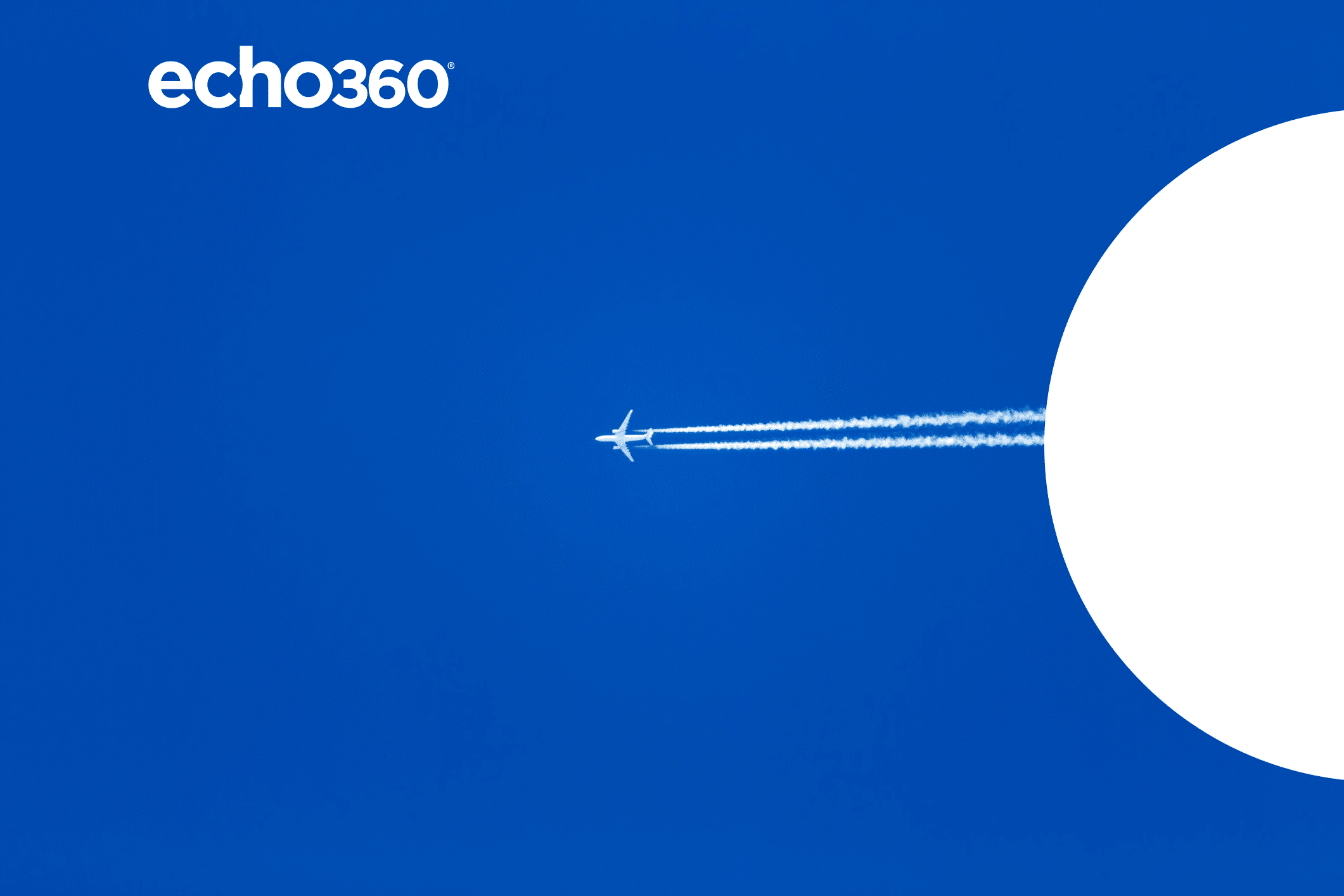EUROCONTROL Expands Climate Focus Beyond Carbon Emissions and into Contrails

Echo360’s partner EUROCONTROL is a pan-European, intergovernmental organization whose operations support every aspect of the aviation industry. Intensified by the European Commission’s launch of their Green Deal in December 2019, which includes targets and an action plan to reduce transport-related greenhouse gas emissions 90 percent by 2050, EUROCONTROL has been manically focused on aviation sustainability. Even with massive progress being made, there are still several major challenges the sector faces as it navigates Europe’s twin transitions towards a more sustainable future enabled by digital technologies.
Marylin Bastin, Head of Aviation Sustainability for EUROCONTROL, opened the most recent edition of the organization’s bi-annual “Aviation Sustainability Briefing” with an explanation of what she thinks one of the sector’s biggest challenges is: moving from a “green” to a “climate” trajectory. Bastin explains how a climate trajectory would better keep Europe on target to meet its penultimate goal of climate neutrality by 2050 by broadening the scope of emissions recognized as environmental harms to include non-CO2 industry emissions. “From 1 January 2025 onwards”, Bastin wrote, aircraft operators will need to start monitoring and reporting, allowing the sector to seriously begin tackling such emissions.
John Santurbano, Director of EUROCONTROL’s Maastricht Upper Area Control Centre (MUAC), explains how, in addition to carbon dioxide and carbon monoxide, aviation emissions include “water vapor, the oxides of nitrogen and sulphur, unburnt hydrocarbons and particulate matters.” Contrails, shorthand for condensation trails, have recently been put in the spotlight by aviation experts one of the most harmful byproducts of non-CO2 emissions the industry produces, “with more than half of the impact of aviation on climate change believed to come from aircraft non-carbon emissions.”
EUROCONTROL explains that contrails “are formed by water, soot and cool air. When water vapor is ejected from the exhaust nozzle of an aircraft engine into sufficiently cold air, it condenses and freezes around soot and other particles in the air, creating tiny ice crystals.” If the conditions are right, those ice crystals form cirrus clouds that trap warm air close to the surface of Earth. Ice-supersaturated regions of the atmosphere have the most ideal conditions for contrail formation and persistence, and so are avoided in flightpaths designed by MUAC’s Advanced Emissions Model (AEM).
The AEM “processes flight trajectories on a flight-by-flight basis to estimate the amount of fuel burn and related [CO2 and non-CO2] exhaust emissions.” Trajectories identified by the model have the lowest calculable environmental impact and are solicited by MUAC to over 120 partnered airlines every day through their ECO service. Still in the trial phase, the service has already seen a 25 percent uptake in AEM proposals, translating to more than 1400 minimally harmful flights taken to date.
Like AEM, Echo360’s technology enables another aspect of EUROCONTROL’s vision and execution of climate-friendly air traffic management (ATM): training ATM staff with the skills necessary to execute safe and sustainable flight operations. PointSolutions is used within their delivery of training courses on areas such as safety, security, new and relevant legislation and various operational aspects of air traffic control.
Despite such progress being made, EUROCONTROL has made it clear that more research is needed to fully understand the environmental impacts of contrails, such as how they persist for so long in the atmosphere before dissipating and how much heat-trapping potential they have compared to greenhouse gas emissions. That’s why in 2023 they introduced ContrailNet, “a new network to create a common repository of contrail observation data,” to further global understanding of the phenomena and its impacts.
